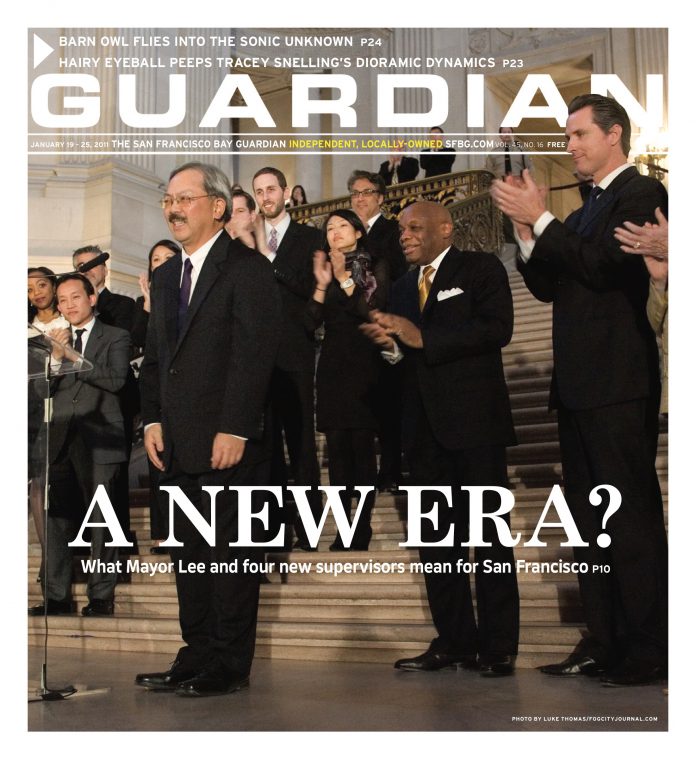arts@sfbg.com
FILM Who wants to die for art? That question, immortally screamed by Divine at the climax of John Waters’ Female Trouble (1974), has most recently been taken up by Darren Aronofsky’s campy psychological thriller Black Swan (2010), in which Natalie Portman’s fragile ballerina discovers that giving her all as the good and evil leads in an edgy production of Swan Lake requires giving up her sanity, and eventually, her life.
The somewhat romantic notion that an overinvestment in one’s art can lead to a psychotic break with reality also underlies Ronald Colman’s far more gripping, Oscar-winning performance in George Cukor’s 1947 backstage noir A Double Life, a film Black Swan perhaps owes as much a debt to as it does to its other cinematic antecedents such as The Red Shoes (1948) or All About Eve (1950) (2007’s I Know Who Killed Me also deserves a lesser place on that list).
In the film — which screens at the Castro Theatre in a new archival print as part of Noir City 9 — Colman stars as Anthony John, a celebrated stage actor with a nasty temper who winds up playing the title role in a production of Othello opposite his ex-wife Brita (Signe Hasso), who has been cast as Desdemona. As John gets deeper into his character, his own lingering frustrations over his failed marriage become cross-wired with Othello’s jealous rage resulting in a fatal instance of life imitating art. "What seems a fairly safe profession, acting," wrote New York Times film critic Bosley Crowther in his review of the film, "is as dangerous as they come."
Cowritten by husband-and-wife team Ruth Gordon and Garson Kanin (who themselves were no strangers to the stage) and photographed with Expressionistic verve by Milton R. Krasner, A Double Life is — true to its title — filled with mirror imagery, split frames, and opposites locked in conflict. It also sets the stage, if you will, for the other titles in this year’s Noir City program, many of which turn on a character struggling to keep from splitting in two.
So often in film noir, the burden of proof is so great as to drive our hero or heroine mad as they try to convince those around them that they’re innocent, in danger, or more often than not, both. Such is the case with Pat O’Brien’s museum curator in Crack-Up (1947), who survives a horrible accident only to be told it never happened, or Barbara Stanwyck’s imperiled, bed-ridden rich girl in 1948’s Sorry, Wrong Number (Stanwyck, it should be noted, is all over this year’s festival, including a blistering starring turn as the titular addict in 1949’s The Lady Gambles).
In some cases, as with two of this year’s many not-on-DVD rarities, the protagonists actually do have evil twins. Olivia de Havilland beat Hayley Mills to the punch playing both sisters in Robert Siodmak’s The Dark Mirror (1946), in which the evil de Havilland uses her physical resemblance to frame her sweet sister (also de Havilland) for murder. Meanwhile, in Among the Living (1941), Albert Dekker goes up against himself as a brain-damaged psychopath who terrorizes a small town and the fraternal twin who must take him out.
This year’s nuttiest film by far is Fritz Lang’s Freudian roller-coaster ride The Secret Beyond the Door (1948). Faster than you can say Rebecca (1940), Joan Bennett’s naïve newlywed has been whisked off to her new husband’s big, dark house full of repressed secrets and a spinsterish head housekeeper. As gorgeous to look at is its plot is difficult to follow, The Secret Beyond the Door is a film you’d have to be nuts not to see.
NOIR CITY 9
Jan. 21–30, $10
Castro Theatre
429 Castro, SF
(415) 621-6120

